 Technology
Technology  Technology
Technology  Humans
Humans 10 Everyday Human Behaviors That Are Actually Survival Instincts
 Animals
Animals 10 Animals That Humiliated and Harmed Historical Leaders
 History
History 10 Most Influential Protests in Modern History
 Creepy
Creepy 10 More Representations of Death from Myth, Legend, and Folktale
 Technology
Technology 10 Scientific Breakthroughs of 2025 That’ll Change Everything
 Our World
Our World 10 Ways Icelandic Culture Makes Other Countries Look Boring
 Misconceptions
Misconceptions 10 Common Misconceptions About the Victorian Era
 Mysteries
Mysteries 10 Strange Unexplained Mysteries of 2025
 Miscellaneous
Miscellaneous 10 of History’s Most Bell-Ringing Finishing Moves
 Technology
Technology Top 10 Everyday Tech Buzzwords That Hide a Darker Past
 Humans
Humans 10 Everyday Human Behaviors That Are Actually Survival Instincts
 Animals
Animals 10 Animals That Humiliated and Harmed Historical Leaders
Who's Behind Listverse?

Jamie Frater
Head Editor
Jamie founded Listverse due to an insatiable desire to share fascinating, obscure, and bizarre facts. He has been a guest speaker on numerous national radio and television stations and is a five time published author.
More About Us History
History 10 Most Influential Protests in Modern History
 Creepy
Creepy 10 More Representations of Death from Myth, Legend, and Folktale
 Technology
Technology 10 Scientific Breakthroughs of 2025 That’ll Change Everything
 Our World
Our World 10 Ways Icelandic Culture Makes Other Countries Look Boring
 Misconceptions
Misconceptions 10 Common Misconceptions About the Victorian Era
 Mysteries
Mysteries 10 Strange Unexplained Mysteries of 2025
 Miscellaneous
Miscellaneous 10 of History’s Most Bell-Ringing Finishing Moves
10 Wonderful Cars And Their Strange Qualities
More than one billion cars populate the world today. They’re the world’s most recycled consumer product. And in the vast seas of four-wheeled buckets designed to carry bored office workers, it’s hard to truly appreciate any of them. There have been, however, a great many wonderfully strange automobiles produced in both the past and present that no one can help but marvel at.
10Reliant Robin

The Reliant Motor Company was founded in 1935 in Tamworth, England, and the small auto manufacturer produced three-wheeled vehicles from the start. Three-wheeled automobile are classified as motorcycles in the UK and thus are cheaper to register and insure. But as so often is the case with cheap motoring, there’s a catch. The Robin’s catch is that it rolls over. Almost everyone can recall a childhood memory of falling off their tricycle and scuffing a knee, and the Robin is exactly like that but with far worse consequences.
This claim admittedly isn’t glamorous, but it has earned the car fame, such as being featured on BBC’s Top Gear. Jeremy Clarkson rolled it numerous times before abandoning it.
And yet the Reliant Robin is statistically the safest car in the United Kingdom. Only 0.9 percent of them are reported being crashed. This is probably because the owners are so careful to avoid ending up on their roof from a quick jerk of the wheel.
9Morgan Three-Wheeler
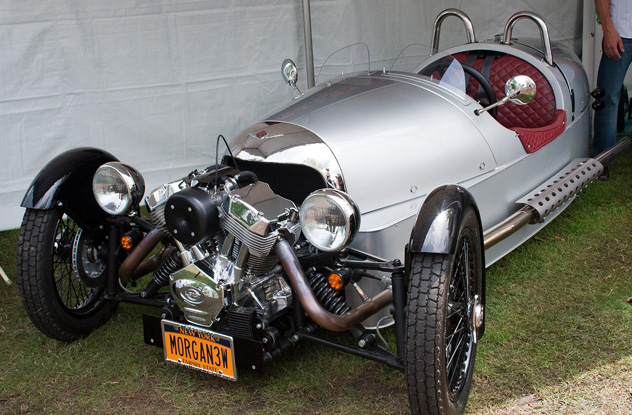
Here’s another British three-wheeled automobile, this one less noted for its ability to roll over and more for its sheer quirkiness.
Morgan is a small family-based automobile company headquartered in Malvern, England and founded in 1909. From the very beginning, the company produced three-wheelers, and when inspecting their modern take on their classic design, you’d be hard-pressed to find any differences. Besides looking like a relic from the past, the modern three-wheeler is constructed in ways that even boutique auto manufactures abandoned long ago, with 40,000 paint colors and 50 different leather options to choose from.
The three-wheeler uses a “bomb-release” starter button and airplane instrument gauges. But perhaps the most fascinating thing about Morgan cars is the use of ash wood for the frame instead of metal. This reduces weight and aids in the overall feel of driving.
If the car is still too tame for your vintage aircraft tastes, there exists an optional extra to ditch the paint and have the hand-formed aluminum body polished to a mirror shine.
8Stout Scarab
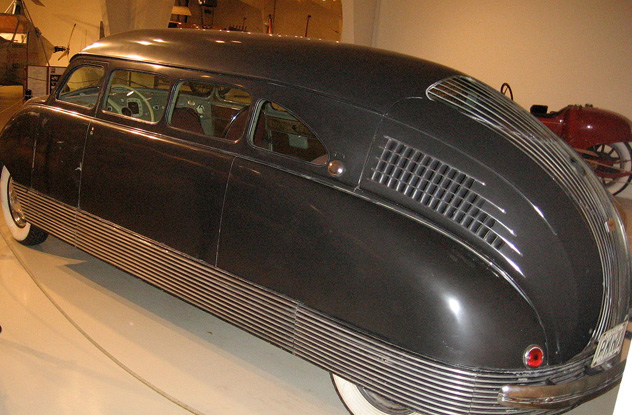
Perhaps the most dull and uninspiring vehicle type on the road today is the minivan. It’s a rolling appliance designed to ferry kids from destination to destination. It wasn’t always like this, however. As with many other things in history, the first rendition had the best intentions, and the Stout Scarab in 1936 paved a glorious path for minivans (a path none followed).
American aircraft engineer William Bushnell Stout had been involved with the automotive industry since 1907, when he was the chief engineer for Chicago’s Schumeir Motor Truck Company. After years in and out of various automotive positions, Stout formed the Stout Metal Airplane Company in 1923 before selling it to Henry Ford in 1925.
Beginning in 1935, Stout began publicizing a people carrier that he christened the Scarab, a car that used airplane-inspired styling and construction. The Scarab was truly revolutionary and not just because it was the first minivan. It featured an interior that could be arranged to fit any user’s needs, with its rear seats able to be reconfigured around a mounted table. Combined with ambient lighting and thermostatic heating controls, this made the Scarab a rolling living room.
Besides these notable features, the Scarab also possessed powered door locks, a fiberglass body, and recessed windows and door handles to improve aerodynamic efficiency. As amazing as the Scarab was, however, it was prohibitively expensive for the time, starting at $5,000 in 1934 ($90,000 in today’s money). Because of this, only nine Scarabs where believed to be built from 1934 to 1939.
7Aston Martin Lagonda
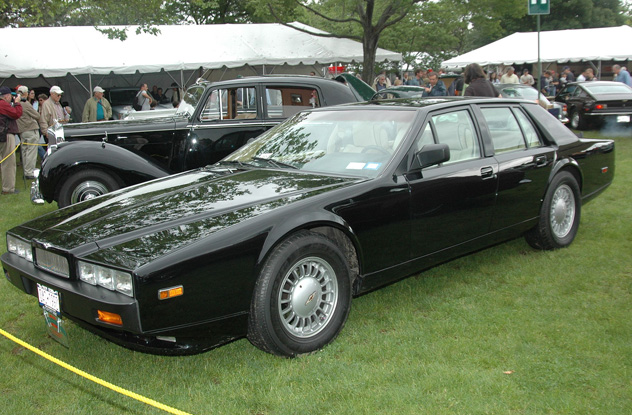
There’s no doubting the prestige of England’s premier sports car manufacturer. Over the last century, Aston Martin can lay claims to dozens of wonderful and beautiful automobiles. The Lagonda, however, wonderful as it may be, wasn’t exactly beautiful. The first thing you’ll notice is its extreme and polarizing design, but it’s what’s on the inside that counts.
While it might seem commonplace now for cars to have electronic parts, the Lagonda was the first car to possess a digital LED touch-sensitive dashboard. This was all the way back in 1976. Digital dashboards in an era where leaded gasoline was still being phased out proved difficult, and the Lagonda went through numerous redesigns before eventually settling on fluorescent vacuum tubes for its futuristic display.
The Lagonda soldiered on and continued to develop all the way up to 1990, even adopting recorded voice commands in 1984, programmable in English, German, French, and Arabic. The inclusion of Arabic was important, as the Lagonda sold very well in the Middle East.
6Dodge Viper RT/10
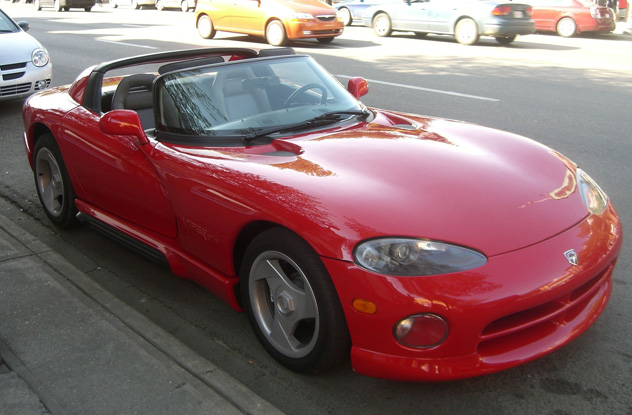
The Viper was to be a modern-day Shelby Cobra, one of the world’s greatest muscle cars. The new car was to be just as pure and bare bones as the Cobra, a counter statement to just how bloated and complicated all cars had become. The design is perhaps the greatest example of a sketch come to life, and when it debuted as a concept car in 1989 at the Detroit Auto show, it caused such a sensation that it was put into production with very few changes to the design and its principles.
The production car of 1992 was legendary for its simplicity. For a price of $50,000, you got a huge engine, a beautiful body, and not much else. Even air conditioning was originally not offered, nor was a permanent top. Not even exterior door handles or side windows made the cut. But even though it had plastic side windows like a tent and side exhausts that would scorch your legs as you exited the vehicle, the Viper has remained one of the world’s most wonderful, albeit strange cars.
5Citroen DS

Citroen has always been at the cutting edge of automotive innovation, Their current claim to fame is a small SUV named the Cactus that has deformable body panels on the bumpers and sides to eliminate fender benders and parking lot scratches. Citroen’s most famous car perhaps is the 2CV, noted for both looking like a duck and getting France moving after World War II.
The company’s DS, which debuted in 1955, came with a suspension so smooth that it was likened to riding on a magic carpet. The tech behind it was revolutionary in using not traditional springs and gas-filled shock absorbers but a combination of hydraulics and pneumatics. This allowed the car’s height to be adjusted and could self-level the car on any road surface for comfort. This feature made the DS a French national hero in 1962 when it most likely saved President Charles de Gaulle’s life.
While he was on a drive to Orly airport through the Parisian suburbs, assassins opened fire on de Gaulle’s DS, bursting all four of its tires. The complex suspension adjusted to this unforeseen inconvenience and allowed the car to retreat at full speed, escaping the assailants.
The French president was so grateful that he advocated the DS for the rest of his days in the public eye. When offered a custom armor-plated model in 1968, he instead opted to keep the original one that had saved his life—presumably with new tires fitted.
4Ferrari 250 GTO
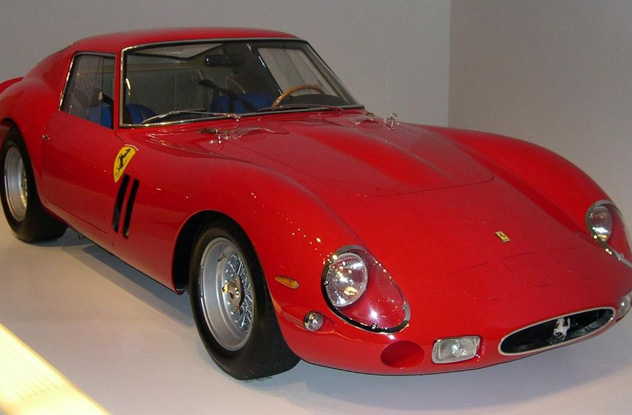
Every year, the International Automobile Federation (FIA) gives an award to the manufacturer whose car performs best in races over the course of the season. The first few years that it awarded this title, the FIA focused on sports prototypes. Then in 1962, it changed its rules, allowing only cars that were mass-produced for the public. To stay in the running, Ferrari needed a new model, and it needed to produce several units.
The result was the 250 GTO. Ferrari built 36 of them, which was a lot for a unique racing model but a tiny number by any other measure. As a result, the car’s prices at auction today are nothing short of astounding. The most expensive car ever sold at auction was a 250 GTO bought in 2014 for a hair over $34 million.
For that price, you’re buying more than just a car because each GTO was slightly different. Each aluminum body was hand-beaten over pieces of wood, and thus each one isn’t a precise copy. Some were even slightly asymmetrical. Their fiery Italian engines weren’t all the same, either. While the mechanics were supposed to aim for 295 horsepower from each unit, some engines were more powerful than others.
These cars weren’t mere automobiles then but pieces of art. So if you’re very rich and want a centerpiece for your home, park one of these in place of that original Picasso.
3Mercedes-Benz 600 Pullman Limousine
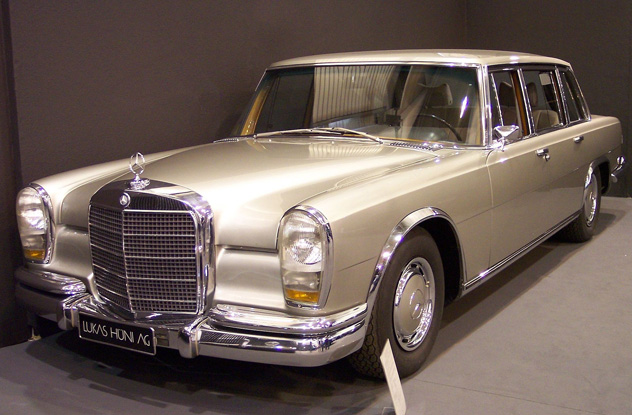
The extensive and extravagant customization options of the Mercedes-Benz 600 Pullman Limousine (or the “Grosser,” as it was affectionately known) attracted a very specific type of user: dictators. Saddam Hussein, Mao Zedong, Fidel Castro, Nicolae Ceausescu, Idi Amin Dada, and Kim Jong-Il all enjoyed the luxury of being chauffeured in a 600 Grosser.
That isn’t the most fascinating aspect of the Grosser, though. That honor goes to the complex hydraulic system that runs virtually everything in the car. The system is pressurized at 3,200 psi and only takes mineral oil. Any synthetic oil eats away at the rubber seals, making the car leaks out of its doors like a sieve.
That immense pressure has its consequences. Because each window has a variable speed of operation, the fastest speed can break your arm if you’re not careful. But you’ll likely never have to worry about that. The driver’s side window switch alone costs $11,200 to replace, so you’ll likely choose to just leave the windows up.
2Lamborghini Countach
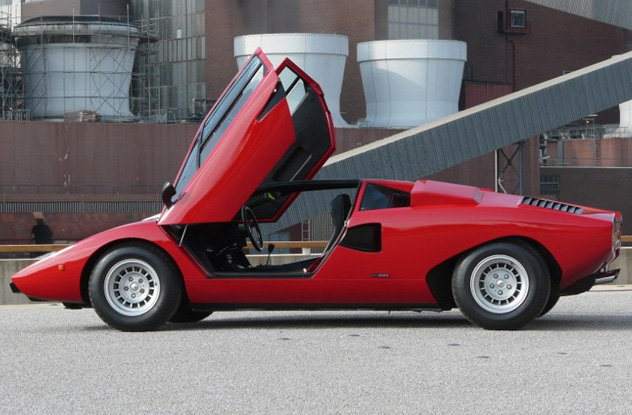
The Lamborghini Countach was designed to shock. The name itself is an exclamation—“countach” in a Piedmontese dialect conveys exclamation. It’s the equivalent of the English word “wow,” although there does exist a more risque undertone to the word, according to some. Legend says that car designer Bertone uttered the slang the moment he saw the final car designed by Marcello Gandini. Company owner Ferruccio Lamborghini reportedly liked his reaction so much he decided use it as the car’s name.
The moniker was justified. Even in 1974 when car design often reached gross excess, the Countach was jaw-dropping. It pioneered cab-forward design in pushing the driver far to the front of the car, a choice that supercars are still following 40 years later.
With this radical design came strange compromises, though. If you were on the taller side, you weren’t fitting inside the Countach. The foot well is so narrow that drivers sometimes have to ditch their shoes to use the pedals.
Even when comfort is set aside in favor of speed and thrills, the Countach is an exhausting and extremely uncomfortable car to drive. It is deafeningly loud, hard to see out of, and gets extremely hot inside the cabin. This didn’t really matter, though. The Countach was meant to be an aesthetic sledgehammer. Even today, it turns heads more than any other car new or old, and we have it to thank for the now famous upward-swinging scissor doors.
1McLaren F1
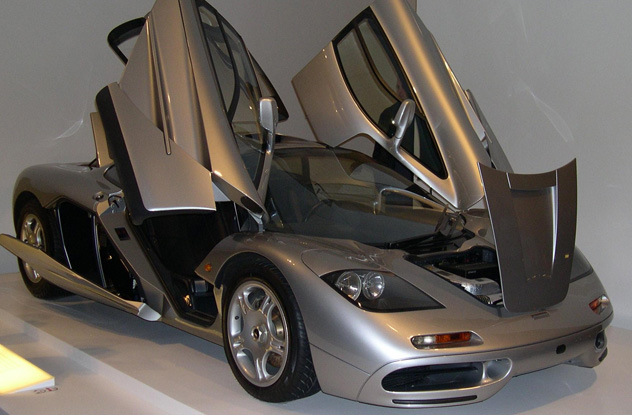
British car designer Gordon Murray wanted to implement Formula One technology and space-age materials to create the ultimate road car during the 1988 Formula One season. With the help of McLaren team principal Ron Dennis, he made that dream a reality.
When it was released in 1993, the McLaren F1 was the most expensive production road car in the world at a staggering $857,000. Only 64 were built. While it has been eclipsed dozens of times in price over the years, it held the production car speed record of 391 kilometers (243 mi) per hour for over a decade from 1993 to 2005.
That was only a byproduct of the amazing engineering behind this mythical car. The F1 was the first production car to be made out of carbon fiber. The leather in the interior was shaved to half the usual thickness to save weight, and the engine bay was lined with gold leaf because gold is the best heat conductor. Every ounce of this car, even the thickness of the washers, was thoughtfully planned and then planned again. The car itself was designed entirely from hand-drawn blueprints, its stainless steel instrument dials featured hand-painted numbers, and each tachometer needle was individually machined by hand.
Despite the performance figures and obsessive attention to detail, the most mesmerizing feature of the F1 is its three-seat configuration. The driver is centrally positioned to better aid in the driving experience.
Patrick Fuller is a university student studying industrial design who spends an immense time lusting after cars he’ll one day certainly own.








